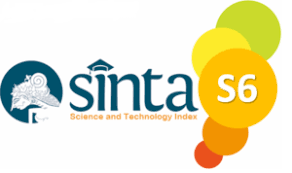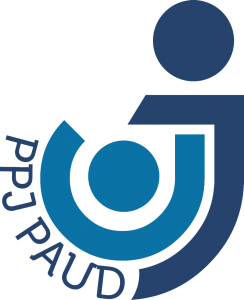Technology Trends in Translation: A Comparative Analysis of Machine and Human Translation
DOI:
https://doi.org/10.37680/absorbent_mind.v3i2.4486Keywords:
Accuracy, Human Translation, Machine Translation, TechnologyAbstract
The development of translation technology, whether through machines or humans, has created a new paradigm in cross-language information exchange. This research aims to carry out a comparative analysis between translation results produced by machine translation systems and human translations. The method used in this research is qualitative in a comprehensive literature review aimed at understanding the latest developments in translation technology, with a particular focus on comparing machine and human translation. The data collection technique is through a literature review system from the study of scientific articles and data analysis using a qualitative approach. The results show that comparisons between machine and human translation involve careful assessment of each method's accuracy, consistency, and flexibility. While machine translation excels in speed and consistency, human translation provides advantages in terms of depth of accuracy and greater flexibility. The results of this research will provide a valuable contribution to further understanding of the role of technology in the translation industry and its implications for the use of translation in various communication contexts.
References
Abas, S., & Mabrur, H. (2022). Rekonstruksi Epistemologi Pendidikan Agama Islam. Eduprof: Islamic Education Journal, 4(1), 77–99.
Abdurahman, A., Marzuki, K., Yahya, M. D., Asfahani, A., Pratiwi, E. A., & Adam, K. A. (2023). The Effect of Smartphone Use and Parenting Style on the Honest Character and Responsibility of Elementary School Students. Jurnal Prima Edukasia, 11(2).
Agustina, I., Siregar, L. A., Husain, D. L., Asfahani, A., & Pahmi, P. (2023). Utilization of Digital Technology in Children’s Education to Enhance Creative and Interactive Learning. At-Tarbawi: Jurnal Pendidikan, Sosial Dan Kebudayaan, 10(2), 276–283.
Aher, G. V, Arriaga, R. I., & Kalai, A. T. (2023). Using large language models to simulate multiple humans and replicate human subject studies. International Conference on Machine Learning, 337–371.
Alam, A. (2020). Google Translate Sebagai Alternatif Media Penerjemahan Teks Bahasa Asing Ke Dalam Bahasa Indonesia. Instruksional, 1(2), 159–163.
Arba, N., Widyasari, W., Efendi, Y., & Syaputri, W. (2023). Analisa Hasil Terjemahan Google Translate Dalam Lirik Lagu “To The Bone” Oleh Pamungkas. Jurnal Pembahsi (Pembelajaran Bahasa Dan Sastra Indonesia), 13(1), 55–67.
Asfahani, A. (2019). Model Pengembangan Bahan Ajar Aqidah Akhlak (Studi Kasus Kelas Reguler dan Kelas Akselerasi MTs Negeri Ponorogo). QALAMUNA: Jurnal Pendidikan, Sosial, Dan Agama, 11(1), 13–36.
Asyafah, A. (2019). Menimbang model pembelajaran (kajian teoretis-kritis atas model pembelajaran dalam pendidikan islam). TARBAWY: Indonesian Journal of Islamic Education, 6(1), 19–32.
Defina, D., Aisah, S., & Adam, S. H. (2019). Analisis Kebahasaan Hasil Terjemahan Abstrak Berbahasa Inggris ke dalam Bahasa Indonesia dengan Google Translate. Prosiding Seminar Nasional STKIP PGRI Bandar Lampung, 1(1), 131–144.
Djamilah, W. I. F., & Syarifah, A. (2023). Peluang Dan Tantangan Profesi Penerjemah Dalam Perspektif Swot Di Era Tekhnologi Digital. Proceeding of International Seminar on Adab and Humanities, 5(1), 71–79.
Fatimah, A. S. (2019). Portraying Learner’s Autonomy in Extensive Reading Classroom. OKARA: Jurnal Bahasa Dan Sastra. https://doi.org/10.19105/ojbs.v13i1.2228
Indah Sari, Anni Holila Pulungan, & Rahmad Husein. (2020). Students’ Cognition and Attitude in Writing Descriptive Text. Britain International of Linguistics Arts and Education (BIoLAE) Journal, 2(1), 395–404. https://doi.org/10.33258/biolae.v2i1.210
Joenaidy, A. M. (2019). Konsep dan Strategi Pembelajaran di Era Revolusi Industri 4.0. Laksana.
Kawohan, A. Y., Tumbel, T. M., & Walangitan, O. (2021). Strategi Pemasaran Café & Resto D’Talaga Desa Wioi pada Masa Pandemi Covid-19. Productivity, 2(3), 176–181.
Li, X. (2022). The Influence of Parenting Styles on Social-Emotional Competence of Children. 2022 5th International Conference on Humanities Education and Social Sciences (ICHESS 2022), 1065–1072.
Mâţă Liliana, Asfahani Asfahani, & Mariana Mariana. (2023). Comparative Analysis of Educational Policies: A Cross-Country Study on Access and Equity in Primary Education. EDUJAVARE: International Journal of Educational Research, 1(1), 19–28.
Mhlanga, D. (2022). The role of artificial intelligence and machine learning amid the COVID-19 pandemic: What lessons are we learning on 4IR and the sustainable development goals? International Journal of Environmental Research and Public Health, 19(3), 1879.
Millner, N. (2021). Unsettling feelings in the classroom: scaffolding pedagogies of discomfort as part of decolonising human geography in higher education. Journal of Geography in Higher Education. https://doi.org/10.1080/03098265.2021.2004391
Muhdi, M. (2019). Framework for implementation of education policy in the perspective of education management in Indonesia. Universal Journal of Educational Research, 7(12), 2717–2728. https://doi.org/10.13189/ujer.2019.071220
Munandar, M. I., & Newton, J. (2021). Indonesian EFL teachers’ pedagogic beliefs and classroom practices regarding culture and interculturality. Language and Intercultural Communication, 21(2), 158–173.
Nekoto, W., Marivate, V., Matsila, T., Fasubaa, T., Kolawole, T., Fagbohungbe, T., Akinola, S. O., Muhammad, S. H., Kabongo, S., & Osei, S. (2020). Participatory research for low-resourced machine translation: A case study in african languages. ArXiv Preprint ArXiv:2010.02353.
Putri, R. F., & Putri, R. F. (2020). the Improvement of Kkni Based Learning Model Through Collaborative Learning in English for Job Hunting Subject. Exposure : Jurnal Pendidikan Bahasa Inggris, 9(2), 277–285. https://doi.org/10.26618/exposure.v9i2.4146
Rifat, M., Ilham, I., Bayani, B., & Asfahani, A. (2023). Digital Transformation in Islamic Da’wah: Uncovering the Dynamics of 21st Century Communication. JIM: Jurnal Ilmiah Mahasiswa Pendidikan Sejarah, 8(3), 2933–2941.
Saha, M. (2023). English teachers’ attitudes towards learners: Effects on the rural pedagogies in Bangladesh. Ampersand, 10, 1–9. https://doi.org/10.1016/j.amper.2022.100107
Sujaini, H. (2017). Meningkatkan Peran Model Bahasa dalam Mesin Penerjemah Statistik (Studi Kasus Bahasa Indonesia-Dayak Kanayatn). Khazanah Informatika: Jurnal Ilmu Komputer Dan Informatika, 3(2), 51–56.
Supriatnaningsih, R., Mr, R., Hariri, T., & Astini, E. (2019). Politeness In Students’ Speeches When Speaking Japanese With Native Speakers. UNNES International Conference on English Language Teaching, Literature, and Translation (ELTLT 2018), 235–239.
Tumminio Hansen, D. (2021). Remembering Rape in Heaven: A Constructive Proposal for Memory and the Eschatological Self. Modern Theology, 37(3). https://doi.org/10.1111/moth.12651
Waham, J. J., Asfahani, A., & Ulfa, R. A. (2023). International Collaboration in Higher Education: Challenges and Opportunities in a Globalized World. EDUJAVARE: International Journal of Educational Research, 1(1), 49–60.
Downloads
Published
How to Cite
Issue
Section
License
Absorbent_mind; Journal of Psychology and Child Development allow the author(s) to hold the copyright without restrictions and allow the author(s) to retain publishing rights without restrictions, also the owner of the commercial rights to the article is the author.
License:
- Attribution: You must provide an appropriate name, include a link to the license, and certify that changes have been made. You can do this in an appropriate manner, but do not imply that the licensor supports you or your use.
- Share Alike: If you compose or make derivatives of these materials, you must distribute your contributions under the same license as the original materials.
- No additional restrictions: You may not use legal provisions or technological means of control that legally restrict others from doing the things this license allows.
You are free to:
- Share, copy, and redistribute this material in any form or format.
- Adapt, modify, and create derivatives of this material for any purpose, including commercial purposes.
- The licensor cannot revoke the above terms as long as you comply with the terms of this license.
Creative Commons Attribution-ShareAlike 4.0 International License (CC BY-SA 4.0).






